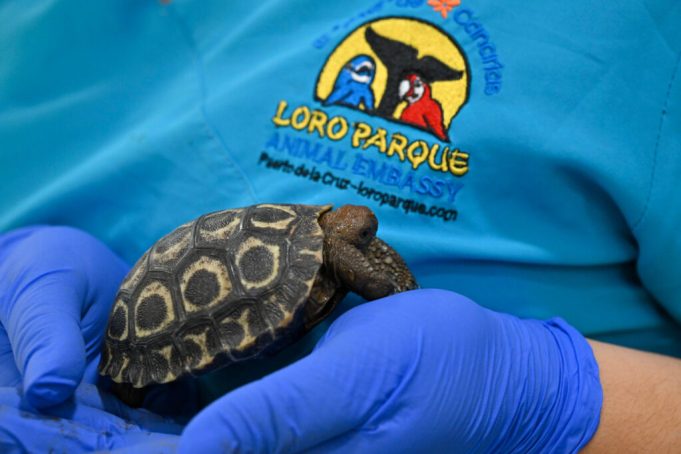Four new Galápagos giant tortoises have hatched at Loro Parque. What makes this news extraordinary is that this species has only been successfully bred in two accredited zoological institutions in all of Europe, as part of a breeding program developed for this specific species. The exceptional birth represents a new hope for the survival of a highly threatened species that has already lost five of its subspecies from the planet. Currently, only about 15,000 individuals survive in the wild, out of the 250,000 counted at the time of their discovery. This underscores the incalculable value of each newly born individual for their species.
The International Union for Conservation of Nature (UICN) classifies the Galápagos giant tortoises as either endangered or critically endangered. For this reason, in 1959, the government of Ecuador established the Galápagos National Park to protect their original habitat and declared the highest level of protection in 1970.
The four newly born tortoises are offspring of Tom, a male tortoise that has resided in the park for fifty years and belongs to a rare species within the complex group of Galápagos giant tortoises. The mothers are Tomasa and Ronaldiña, two females that came to Loro Parque from the Zurich Zoo, the only one in Europe that had previously succeeded in breeding this species. The arrival of the two females aimed to launch the reproduction project at Loro Parque, a project that has proven to be a success with these births.
The success of the program demonstrates the well-being conditions at the zoo, which have led to the tortoises reproducing and their eggs hatching naturally. This result is even more significant considering the unusual reproductive difficulties faced by Galápagos giant tortoises. Their slow metabolism means it takes up to 25 years for them to reach maturity. In fact, Tom, at over 50 years old, is now a father for the first time.
Moreover, the eggs, buried by the females in the sand, must find the ideal humidity and temperature conditions to survive the nearly four months needed to hatch. After that, the tiny tortoises dig their own way to the surface, where their survival adventure begins.
One of the most relevant questions now is to determine the gender of each offspring since there are no external differences in appearance based on gender. This information is crucial because 99% of tortoises are born female, making their reproduction more challenging, and the birth of males is particularly anticipated. The sex of the tortoises depends on the temperature conditions in which the eggs develop: warmer nests usually produce a higher number of females.
This birth is a milestone for the Animal Embassy, as it represents a new achievement in the intensive preservation work that Loro Parque carries out for these species. Understanding their biology and habits under close expert observation is essential to address the dangers these tortoises face in their habitat. This, combined with breeding programs, becomes a real hope for
the survival of these fabulous animals that can live for more than 100 years.













